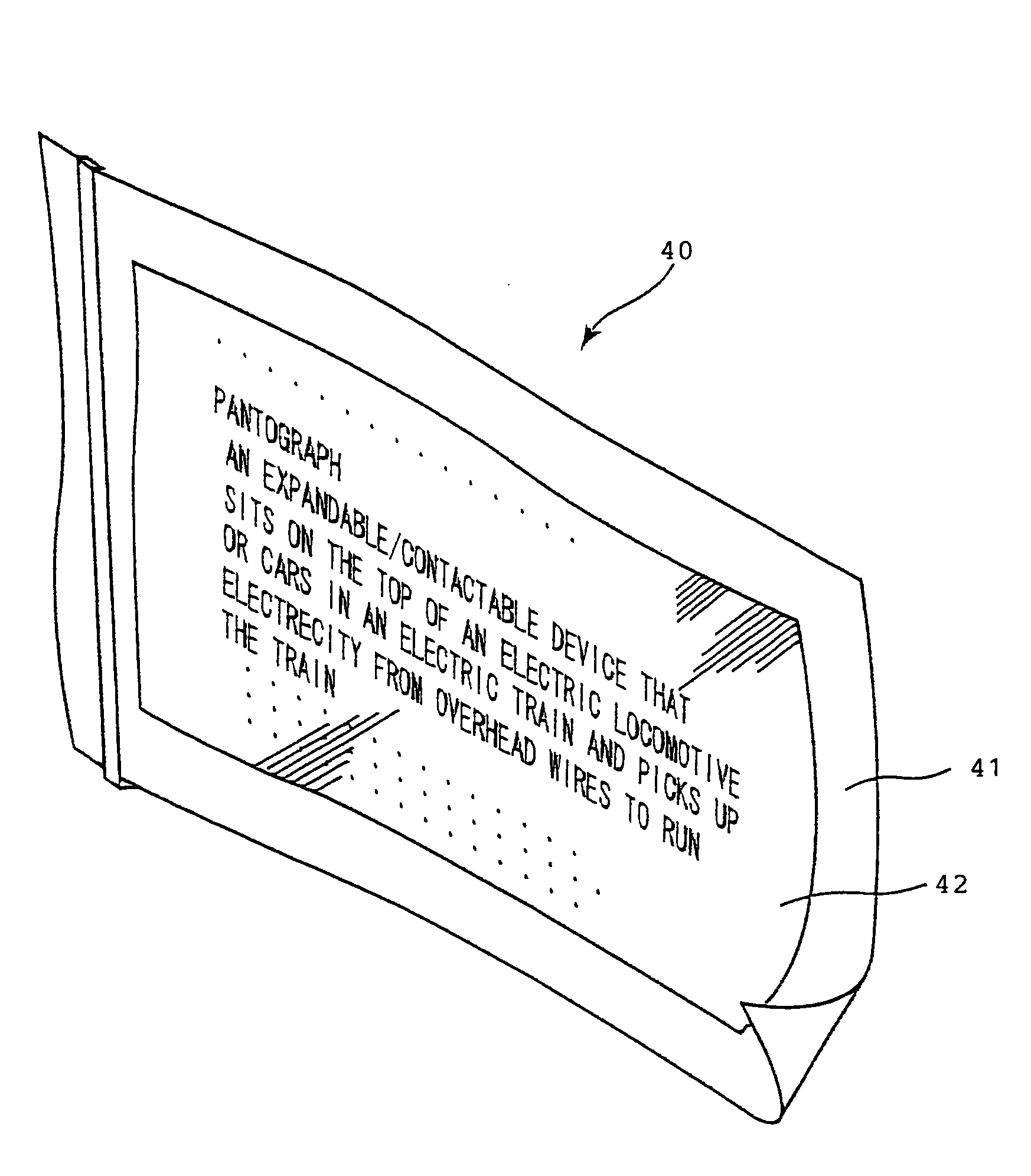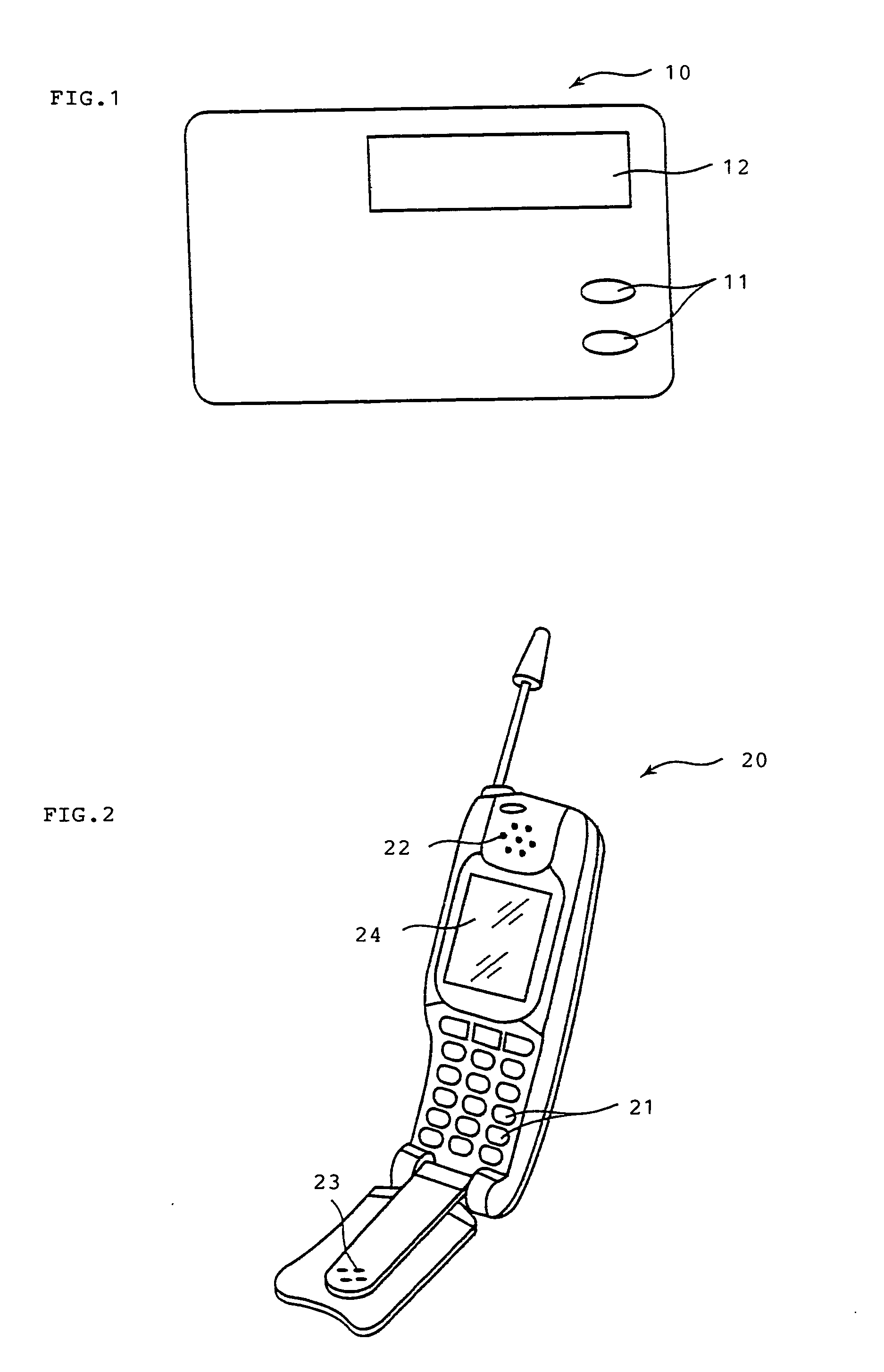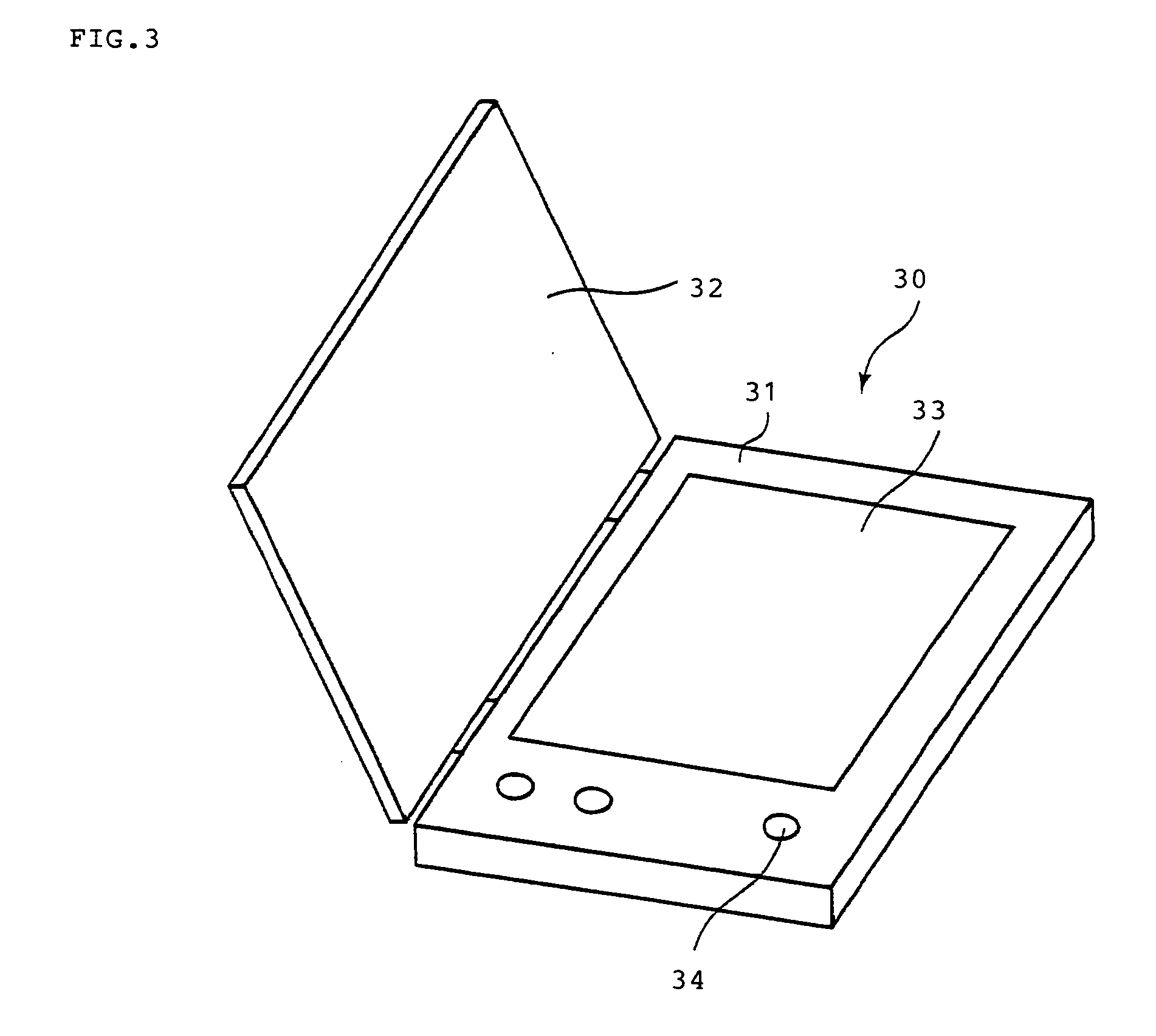Preservation method of microcapsules for electrophoretic display devices and its applications
a display device and electrophoretic technology, applied in the field of preservation method of microcapsules for electrophoretic display devices and its applications, can solve the problems of inability to obtain excellent sheets, inability to meet user's requirements quickly, and electrophoretic properties may be deteriorated in some cases, so as to achieve excellent electrophoretic display devices, fast satisfy user's requirements, and excellent electronic equipment
- Summary
- Abstract
- Description
- Claims
- Application Information
AI Technical Summary
Benefits of technology
Problems solved by technology
Method used
Image
Examples
synthesis example 1
[0134]A 100-mL round-bottomed separable flask was charged with 7.5 g of melamine, 7.5 g of urea, 30 g of a 37% aqueous formaldehyde solution, and 3 g of 25% ammonia water, and the mixture was heated to 70° C. under stirring. After the mixture was kept at the same temperature for 1.5 hours, the mixture was cooled to 30° C. to obtain an aqueous solution (A-1) with a solid content of 54.4% containing a melamine-urea-formaldehyde initial condensation product.
synthesis example 2
[0135]A 300-mL separable flask equipped with stirring blades, a thermometer, and a condenser tube was charged with 2 g of an acrylic polymer (having a mass average molecular weight of 3,300) made of dodecyl methacrylate, 2-ethylhexyl acrylate, and glycidyl methacrylate (their composition ratio being 80:15:5), 20 g of carbon black (MA-100 R, available from Mitsubishi Chemical Corporation), and 78 g of Isoper M (available from Exxon Kagaku K.K.), and further charged with 800 g of zirconia beads having a diameter of 1 mm.
[0136]While the mixture was stirred at a rotation speed of 300 rpm, a polymer grafting treatment was carried out by causing a reaction at 160° C. for 2 hours. After the treatment, further 100 g of Isoper M (available from Exxon Kagaku K.K.) was added, and the mixture was sufficiently mixed. After that, the zirconia beads were separated to obtain a dispersion of carbon black subjected to the polymer grafting treatment (the epoxy groups of the acrylic polymer were reacte...
synthesis example 3
[0141]A 500-mL flat-bottomed separable flask was charged with 120 g of an aqueous solution containing 20 g of gum arabic dissolved therein, and 100 g of the dispersion for electrophoretic display devices was added, while being stirred at 600 rpm using a disper (ROBOMICS, available from Tokushu Kika Kogyo Co., Ltd.). After that, the stirring speed was changed to 1,600 rpm, followed by stirring for 2 minutes, and the stirring speed was changed to 1,000 rpm, and 100 g of water was added to obtain a suspension.
[0142]The suspension was placed in a 300-mL four-necked separable flask equipped with a thermometer and a condenser tube, and while being kept at 40° C. and stirred by paddle blades, 48 g of the aqueous solution (A-1) was added. After 15 minutes, 100 g of an aqueous solution containing 2 g of L-cysteine dissolved therein was added dropwise by a dropping funnel over 5 minutes. While being kept at 40° C., the reaction was carried out for 4 hours, and the temperature was then increas...
PUM
| Property | Measurement | Unit |
|---|---|---|
| electric conductivity | aaaaa | aaaaa |
| volume average particle diameter | aaaaa | aaaaa |
| volume average particle diameter | aaaaa | aaaaa |
Abstract
Description
Claims
Application Information
 Login to View More
Login to View More - R&D
- Intellectual Property
- Life Sciences
- Materials
- Tech Scout
- Unparalleled Data Quality
- Higher Quality Content
- 60% Fewer Hallucinations
Browse by: Latest US Patents, China's latest patents, Technical Efficacy Thesaurus, Application Domain, Technology Topic, Popular Technical Reports.
© 2025 PatSnap. All rights reserved.Legal|Privacy policy|Modern Slavery Act Transparency Statement|Sitemap|About US| Contact US: help@patsnap.com



